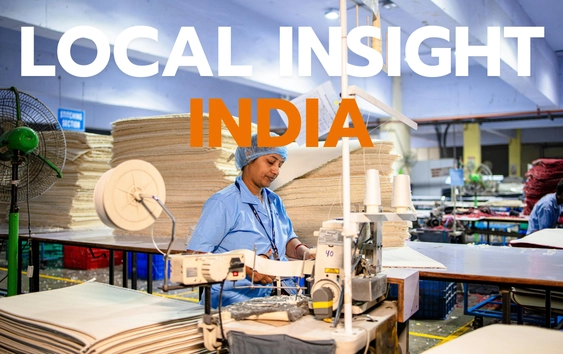Considered one of the world’s oldest civilizations, India is a land of diversity and contrasts. With its vast market and growing economy, it is an attractive destination for businesses worldwide. However, the Indian market is a complex business landscape that requires careful planning and understanding of the culture.
In this article, ALTIOS’ market entry experts give you key advice to succeed your market entry in India.
Understand the complexity of the Indian market
Conduct thorough Market Research
India is a home to a diverse population with varying needs and purchasing power. Before venturing into the Indian market, you will have to conduct a market research in depth in order to understand the market’s dynamics, consumer behavior and competitive landscape. Be careful not to overestimate the market size ; we strongly advise you to establish a market plan (over at least five years) and to define achievable and realistic goals.
What are the Market trends to consider?
India is witnessing a paradigm shift in consumer preferences, driven by the ‘Make in India’ initiative. This initiative launched by the Indian government in 2014 is reshaping the market towards domestically manufactured products, aligning with the growing demand for sustainable and environmentally conscious offerings. The Make in India Program is based on 4 pillars aimed at boosting economic growth, encouraging investment, and strengthening the country’s manufacturing sector:
- New Processes (Ease of doing business): Simplify administrative procedures, reduce bureaucracy, and facilitate the creation and operation of businesses in India.
- New Infrastructure: Develop and modernize key infrastructures to support the growth of the manufacturing sector and facilitate the movement of goods.
- New Sectors: Identifiy 25 sectors in manufacturing, infrastructure, and service activities to promote under the “Make in India” initiative.
- New Mindset: Change the traditional perception of the government as a regulator (adopt a facilitator role rather than a regulator), fostering a partnership for the country’s economic development.
In addition to the ‘Make in India’ initiative, sustainability has emerged as a key market trend, with many foreign companies investing heavily in ESG, CSR, and other initiatives. This focus on environmental and social responsibility reflects the growing awareness of sustainability among Indian consumers, who increasingly demand products and services that align with their eco-conscious values. Many European companies are recognizing India’s potential as a sourcing destination and align their strategies with this shift, presenting immense opportunities for businesses worldwide.
The fastest growing sectors in India in 2023
The Indian market is going through exponential growth in technology, renewable energy, healthcare, and education. In addition, E-learning platforms, which disrupt traditional education models, have gained immense popularity, especially among the tech-savvy youth. Health-tech solutions, addressing the growing healthcare needs of the population, are capturing the imagination of Indian consumers with E-learning platforms and renewable products.
If you are a European company aspiring to do business in India, know that European products are renowned for their quality and reliability, especially medical equipment and renewable energy products. This reputation presents significant opportunities because the demand of high-end and durable products on the Indian market is steadily increasing. Sustainable products, aligning with environmental concerns, are gaining traction, driving businesses to adopt eco-friendly practices.
Moreover, with a population of over a billion people increasingly connected to the Internet, the e-commerce sector in the country is also becoming more important. In addition to have physical stores, you should also consider your online presence, because even though Indians shop online a lot, they also like to see the products. While youth, particularly the tech–savvy millennials, are drawn to innovative, tech–driven solutions, rural consumers prioritize pragmatic yet transformative advancements that align with their traditional values.
India, a multiethnic country
The diverse geography and cultural influences in India lead to significant variations in consumption patterns, preferences and even language; the nation’s linguistic landscape encompasses over 120 languages (only 22 are recognized by the Indian Constitution). This diversity can have a significant impact on market entry strategies, product distribution and brand perception. While national trend may provide a general overview, you will have to adapt your approach to specific regions and states. A comprehensive understanding of these regional nuances is a must to successfully set up a business in India and to ensure that business strategies are aligned with the specific needs and expectations of each states.
Appreciating and adapting to India’s rich cultural heritage is essential for gaining consumer trust and loyalty. Cultural sensitivity permeates every aspect of market engagement, from product design and marketing campaigns to customer service interactions. Furthermore, tailoring product offerings to specific regions and demographics demonstrates cultural respect and resonates with local consumers.
India’s dynamic market, characterized by rapid technological advancements and evolving consumer preferences, demands adaptability. Doing business in India implies to embrace change, continuously evaluate market trends and consumer behaviors to refine strategies and maintain market relevance.
Adopt right distribution strategies
Develop Strategic partnerships
The Indian market presents unique challenges in distribution. Due to the complexity of logistical infrastructures and variations in regulations, you will need to have a strategic approach to supply chain management to overcome operational challenges. The logistical landscape in the country is known for its complexity, ranging from diverse geographic terrains to variations in regulatory frameworks across states.
- Find reliable and experienced partners, experts in the Indian market, to supervise your operations. It will allow you to manage your operations transparently and to provide rapid customer service.
- Having a partner who knows your business sector and operational subtleties in India will increase your efficiency and effectiveness and prepare you to meet the challenges of storage and material flow.
- Ask for help regarding import licenses for goods subject to specific foreign trade rules and restrictions.
- Dialogue openly and directly with distributors to avoid conflict: understand their concerns and points of view, negotiate, and propose win-win solutions. Always have an emergency solution: Explore alternative distribution channels to reduce dependence on a single distributor and broaden your reach in the Indian market.
Invest in Relationships
Building strong relationships with key stakeholders, including distributors, government officials, and business partners, is a key of long-term success in India. Fostering trust, collaboration, and mutual understanding is essential for overcoming bureaucratic hurdles, gaining market access, and achieving sustainable growth.
Want to learn more?
For more content about doing business in India, read the articles on Maier Vidorno’s blog or contact our experts.









